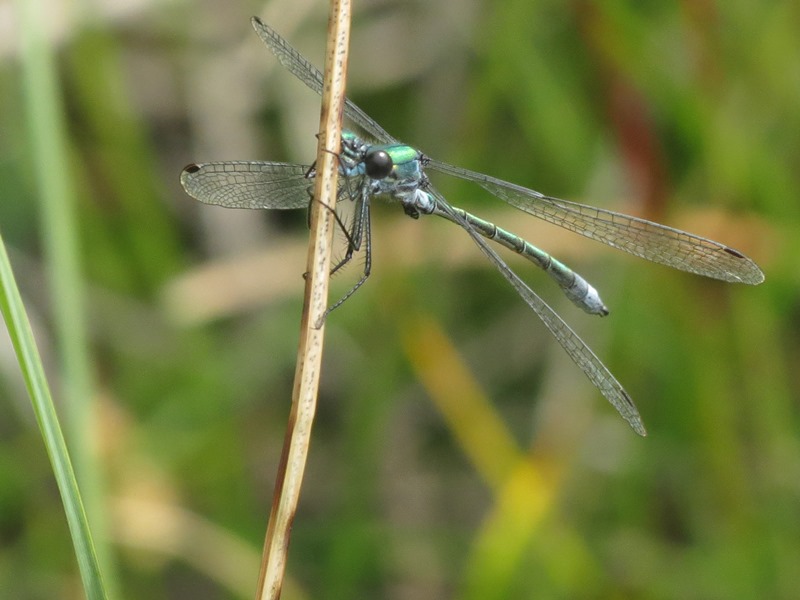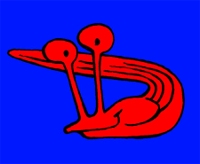|
|
|
|
|
Galleria Tassonomica
di
Natura Mediterraneo
|
 Nota! La determinazione degli insetti necessita quasi sempre di un'indicazione geografica e temporale precisa. Nota! La determinazione degli insetti necessita quasi sempre di un'indicazione geografica e temporale precisa.
Invitiamo quindi gli utenti ad inserire questi dati ogni volta che viene richiesta una determinazione o viene postata una foto di un insetto. I dati forniti dagli utenti ci consentiranno anche di attribuire un valore scientifico alle segnalazioni, contribuendo a migliorare e integrare le attuali conoscenze sulla distribuzione delle specie postate.
|
|
| Autore |
 Discussione Discussione  |
|
|
lumo
Utente Super
    
Città: Sestri Levante
Prov.: Genova
Regione: Liguria

5975 Messaggi
Tutti i Forum |
|
|
lumo
Utente Super
    
Città: Sestri Levante
Prov.: Genova
Regione: Liguria

5975 Messaggi
Tutti i Forum |
 Inserito il - 03 ottobre 2013 : 09:23:39 Inserito il - 03 ottobre 2013 : 09:23:39


|
Immagine:

96,19 KB |
|
 |
|
|
lumo
Utente Super
    
Città: Sestri Levante
Prov.: Genova
Regione: Liguria

5975 Messaggi
Tutti i Forum |
 Inserito il - 03 ottobre 2013 : 09:24:26 Inserito il - 03 ottobre 2013 : 09:24:26


|
Immagine:

90,25 KB |
|
 |
|
|
gomphus
Moderatore
    

Città: Milano
Prov.: Milano
Regione: Lombardia

10487 Messaggi
Tutti i Forum |
 Inserito il - 03 ottobre 2013 : 13:33:23 Inserito il - 03 ottobre 2013 : 13:33:23


|
ciao luca
 |
 maurizio maurizio
quando l'ultimo albero sarà stato abbattuto,
l'ultimo fiume avvelenato, l'ultimo pesce pescato,
allora ci accorgeremo che il denaro non si può mangiare
|
 |
|
|
Cmb
Moderatore
    

Città: Buers
Prov.: Estero
Regione: Austria

12844 Messaggi
Flora e Fauna |
 Inserito il - 12 gennaio 2014 : 12:43:13 Inserito il - 12 gennaio 2014 : 12:43:13


|
Abstract: Parasitierung von Lestes dryas
durch die Wassermilbe Arrenurus papillator
in einer mittelitalienischen Karst-Hochebene
(Odonata: Lestidae; Hydrachnidia):
"Infestation of Lestes dryas by the water mite Arrenurus papillator in a karst high plain in
central Italy (Odonata: Lestidae; Hydrachnidia) – A population of L. dryas was investigated
between 06-vii-2009 and 11-vii-2009 in the Pian Piccolo di Castelluccio, Perugia province,
Umbria, Italy. More than 49 % of the captured imagines (1,014 of 2,058) were infested
by water mites. The degree of infestation was 52 % of males, and 33 % of females. The
proportion of infested individuals decreased during the six days’ survey. The mite-load per
adult ranged from one to 36 larval mites with a median value of nine mites (n = 165). The
decreasing infestation rate in the observation period suggests an infection during emergence.
The mite larvae, attached to both L. dryas and the syntopic Sympetrum flaveolum,
were identified as Arrenurus papillator."
|
"Good people don't go into government" (D. Trump)

Link - nothing is more dangerous than the truth - solo chi conosce il passato, può capire il presente! - nothing is more dangerous than the truth - solo chi conosce il passato, può capire il presente!
|
 |
|
| |
 Discussione Discussione  |
|
|
|
 Natura Mediterraneo Natura Mediterraneo |
© 2003-2024 Natura Mediterraneo |
 |
|
Leps.it | Herp.it | Lynkos.net
|

 Forum
|
Registrati
|
Msg attivi
|
Msg Recenti
|
Msg Pvt
|
Utenti
|
Galleria |
Map |
Forum
|
Registrati
|
Msg attivi
|
Msg Recenti
|
Msg Pvt
|
Utenti
|
Galleria |
Map |